Data-Driven Insights on Retention Rates Today
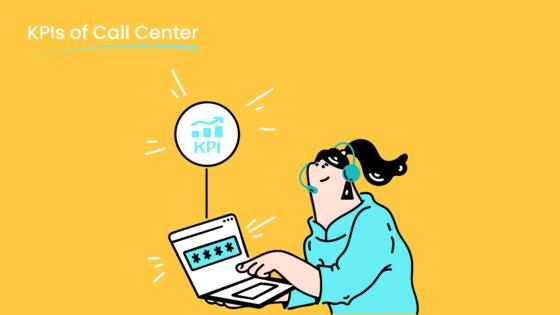
Understanding customer retention is crucial for business growth and profitability. Existing customers spend 67% more than new ones, and increasing retention rates by just 5% can boost profits by up to 95%. Despite this, industries show stark differences in retention success. Media and professional services lead with an 84% rate, while fintech struggles at 37%. So, what is a good customer retention rate? It varies by industry, but the need for effective strategies is universal. Tools like Sobot's Voice/Call Center empower you to analyze customer interactions, personalize experiences, and proactively address churn, ensuring your business stays competitive in today’s dynamic market.
What Is a Good Customer Retention Rate?
Definition of Customer Retention Rates
Customer retention rates measure how well a business keeps its customers over time. It is expressed as a percentage and calculated using a simple formula:
For example, if you start the year with 1,000 customers, gain 400 new ones, and end with 1,200, your retention rate is 80%. This metric helps you understand how effectively your business retains its existing customers. Tools like Sobot's Voice/Call Center can assist in tracking and analyzing this data, providing insights to improve retention strategies.
Why Retention Rates Matter for Businesses
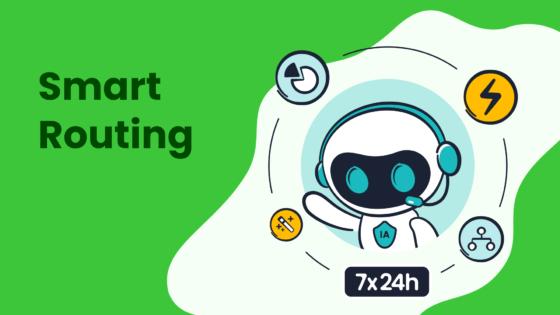
Customer retention plays a critical role in business growth. Studies show that retaining customers is more cost-effective than acquiring new ones. For instance, 82% of business leaders agree that focusing on retention saves money. Additionally, existing customers are 60-70% more likely to make repeat purchases, compared to just 5-20% for new customers. Retention also boosts profitability. A 5% increase in retention can lead to a 75% rise in profits. By using tools like Sobot's AI-powered Voicebot, you can enhance customer interactions and reduce churn, ultimately driving long-term success.
Common Standards and Benchmarks Across Industries
Retention rates vary widely by industry. On average, businesses achieve a retention rate of 72.5%. However, what is a good customer retention rate depends on your sector. For example:
- SaaS companies aim for 90% or higher.
- Retail and e-commerce businesses typically target 60-70%.
- Energy and utilities often reach 89%.
- Computer software averages 86%.
The table below provides a general guide:
| Retention Rate Category | Description |
|---|---|
| Excellent (90% and above) | Strong customer loyalty and minimal churn. |
| Good (75-89%) | Solid retention with room for optimization. |
| Average (60-74%) | Moderate churn; requires improvement. |
| Poor (Below 60%) | High customer turnover, demanding immediate action. |
Understanding these benchmarks helps you set realistic goals. With Sobot's data analytics features, you can monitor your retention metrics and identify areas for improvement.
Industry-Specific Customer Retention Rates
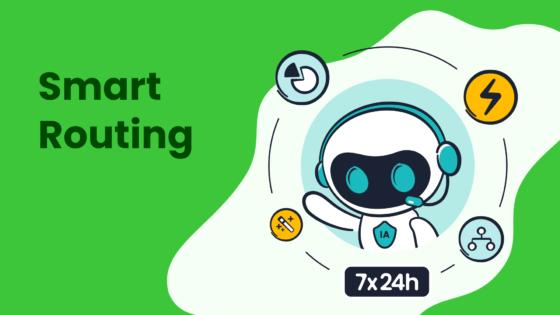
High-Retention Industries and Their Success Factors
Certain industries excel in customer retention due to their ability to build trust and deliver consistent value. Media, SaaS, and insurance sectors lead the way, boasting retention rates of 84%, 90%, and 83%, respectively. These industries prioritize long-term relationships and personalized experiences, which foster loyalty. For example, SaaS companies often use subscription models that encourage ongoing engagement. Media organizations succeed by offering relevant content tailored to audience preferences. Insurance providers retain customers through reliable service and competitive pricing.
Tip: To emulate these success factors, focus on creating personalized experiences and maintaining consistent communication with your customers. Tools like Sobot's Voice/Call Center can help you analyze customer interactions and identify opportunities for improvement.
Here’s a quick look at retention rates across industries:
| Industry | Retention Rate |
|---|---|
| SaaS | 90% |
| Media | 84% |
| Insurance | 83% |
| Fintech | 78% |
| Banking | 75% |
| Edtech | 75% |
| Retail/E-commerce | 63% |
| Hospitality | 55% |
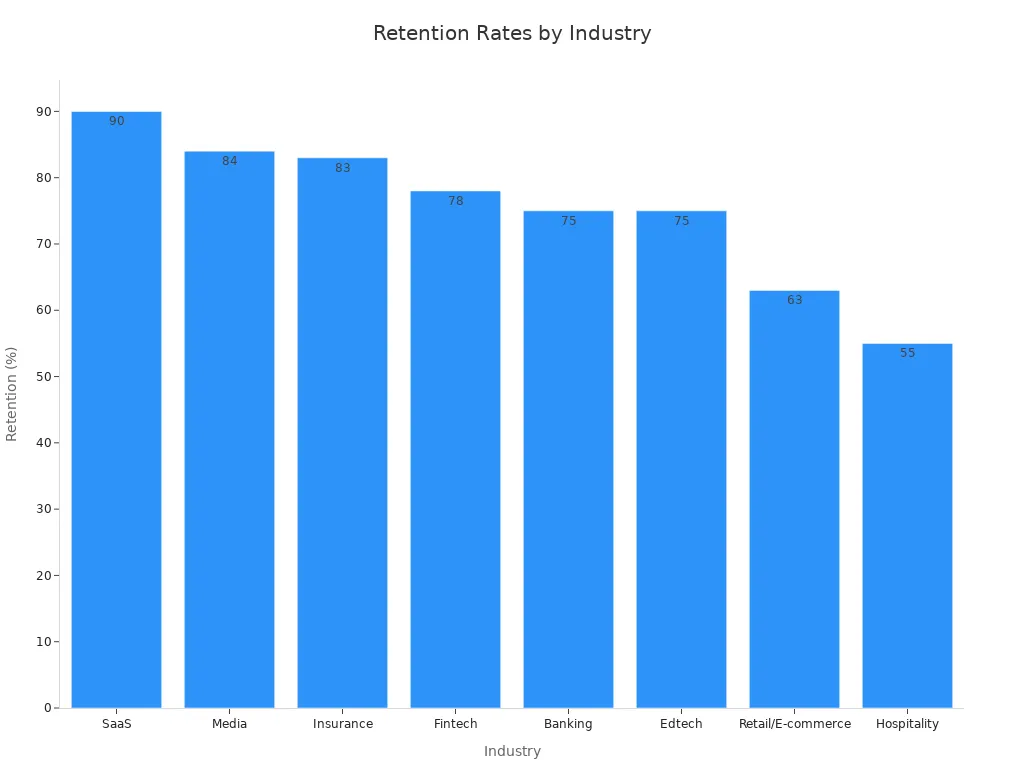
Low-Retention Industries and Their Challenges
Industries with lower retention rates, such as hospitality and retail, face unique challenges. Hospitality struggles with a retention rate of 55%, often due to fluctuating demand and seasonal customer behavior. Retail and e-commerce, with a retention rate of 63%, grapple with intense competition and price sensitivity. These sectors must address customer churn by enhancing engagement and delivering value beyond price.
Common challenges include:
- High turnover rates due to inconsistent customer loyalty.
- Difficulty in maintaining brand differentiation in competitive markets.
- Limited personalization in customer interactions.
To overcome these obstacles, you can leverage data-driven tools like Sobot's AI-powered Voicebot. This technology enables proactive communication and personalized outreach, helping you re-engage customers and reduce churn.
Key Metrics and Benchmarks by Industry
Understanding industry-specific metrics is essential for evaluating customer retention. Media and professional services achieve high retention rates (84%) by fostering trust and delivering tailored solutions. Retail and e-commerce rely on repeat purchase rates to measure loyalty, while subscription services focus on customer churn and revenue churn metrics.
| Industry | Retention Rate | Description |
|---|---|---|
| Media | 84% | High retention due to trust, relevant offerings, and long-term partnerships. |
| Professional Services | 84% | Driven by trust and relationships, leading to high customer loyalty in customized services. |
| E-commerce | N/A | Repeat purchase rate is crucial for measuring customer loyalty in this sector. |
| Subscription Services | N/A | Customer churn and revenue churn metrics are vital for understanding retention in this sector. |
Note: Tracking metrics like churn rate and repeat purchase rate can help you identify areas for improvement. Sobot’s analytics tools simplify this process, offering actionable insights to boost customer retention by industry.
Factors Influencing Customer Retention Rates
The Role of Customer Experience in Retention
Customer experience plays a pivotal role in determining customer retention. A positive experience not only encourages repeat business but also fosters loyalty. Studies reveal that 93% of consumers are more likely to make repeat purchases from companies offering excellent customer service. Emotional attachment, customer satisfaction, and perceived switching costs significantly impact retention rates, as shown in surveys and regression analyses.

For example, businesses that prioritize personalized interactions often see higher retention rates. Tools like Sobot's Voice/Call Center enable you to deliver tailored experiences by analyzing customer interactions and preferences. This approach ensures that customers feel valued, reducing the likelihood of churn. Additionally, providing detailed product information and resolving issues promptly can enhance satisfaction, further improving retention.
Pricing Models and Their Impact on Churn Rate
Pricing models directly influence the churn rate across industries. Customers tend to stay loyal when prices align with their perceived value. Research by Vastani & Monroe (2019) highlights that customers accept prices within their acceptable range, impacting purchasing decisions. For instance, subscription-based models often reduce churn by offering predictable costs and added value.
To manage pricing effectively, you can use customer churn analysis to identify patterns and adjust strategies. Sobot's data analytics tools help you track customer behavior and assess the impact of pricing on retention. By understanding your audience's preferences, you can implement pricing models that minimize churn and maximize loyalty.
Industry-Specific Challenges and Trends
Each industry faces unique challenges that affect customer retention rates. For example, the retail sector struggles with intense competition and price sensitivity, while the hospitality industry deals with seasonal demand fluctuations. Data governance also poses a challenge, with 95% of companies needing better practices and only 33% actively tagging data.
Adopting advanced tools like Sobot's Voice/Call Center can help you address these challenges. With features like real-time monitoring and AI-powered insights, you can identify trends and proactively engage customers. This approach not only improves retention but also positions your business to adapt to evolving industry demands.
Actionable Strategies to Improve Customer Retention
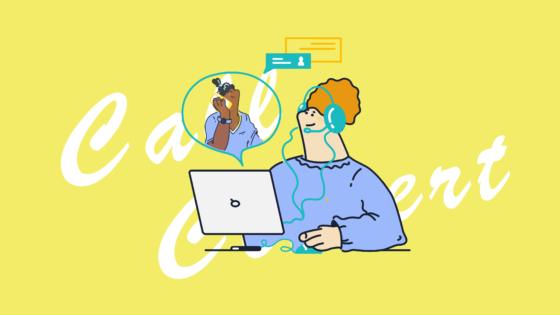
Leveraging Data Analytics with Tools Like Sobot
Data analytics is a powerful tool for improving customer retention. By analyzing customer behavior, preferences, and interactions, you can identify patterns that lead to churn and take proactive measures to address them. For example, it costs five times more to acquire a new customer than to retain an existing one. Increasing customer retention rates by just 5% can boost profits by 25% to 95%.

Tools like Sobot's Voice/Call Center simplify this process. With features like real-time monitoring and call tracking, you can gather actionable insights about customer interactions. These insights help you understand customer pain points and implement targeted solutions. For instance, subscription businesses can use Sobot's AI-powered Voicebot to predict churn and engage customers with personalized offers.
| Evidence Description | Numerical Evidence |
|---|---|
| Cost of acquiring new customers vs. retaining existing ones | Five times more expensive to attract a new customer than to keep an existing one. |
| Impact of retention rate on profits | Increasing customer retention rates by 5% can increase profits by 25% to 95%. |
Case studies further validate the effectiveness of data-driven tools. Sigmoid achieved a 70% improvement in customer retention by using machine learning models for churn prediction and targeted marketing campaigns. Similarly, Sobot helped businesses reach a 95% customer satisfaction rate through personalized service and efficient problem-solving.
| Case Study | Improvement in Customer Retention | Key Features |
|---|---|---|
| Sigmoid | 70% | ML models for churn prediction and targeted marketing campaigns |
| Sobot | 95% | Personalized service and efficient problem-solving through contact center solutions |
Personalizing Customer Experiences for Better Retention
Personalization is key to fostering customer loyalty and improving retention. Customers value experiences tailored to their preferences. Personalized marketing messages enhance engagement, boost conversion rates, and increase customer loyalty. Subscription businesses, in particular, benefit from this approach by creating ongoing value for their customers.
Data-driven personalization tools like Sobot's Voice/Call Center enable you to deliver customized experiences. By analyzing customer data, you can craft messages that resonate with individual needs. For example, subscription businesses can use Sobot's unified workspace to track customer interactions and offer tailored solutions. This approach not only improves customer satisfaction but also reduces churn.
| Benefit | Description |
|---|---|
| Enhanced Customer Experience | Personalized marketing messages cater to individual preferences, leading to a more positive experience. |
| Improved Customer Engagement | Increases engagement through relevant content, resulting in higher click-through rates. |
| Higher Conversion Rates | Tailored messages boost conversion likelihood, driving revenue growth. |
| Increased Customer Loyalty | Fosters loyalty as customers feel understood and valued. |
| Better Customer Retention | Data-driven strategies help identify churn risks and implement retention measures. |
Proactive Communication Through Sobot's Voice/Call Center
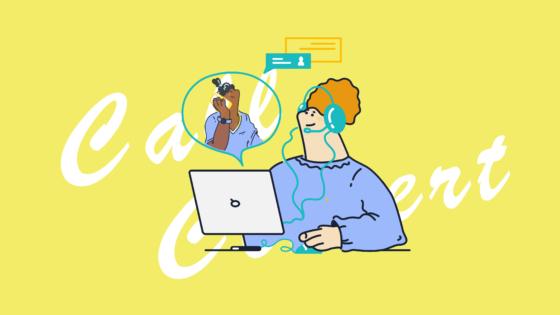
Proactive communication is essential for retaining customers. Instead of waiting for customers to reach out with concerns, you can anticipate their needs and address them before they escalate. Sobot's Voice/Call Center offers tools like intelligent IVR and AI-powered Voicebot to facilitate proactive outreach.
For example, subscription businesses can use Sobot's bulk outbound task feature to send reminders about upcoming renewals or exclusive offers. This keeps customers engaged and reduces the likelihood of churn. Additionally, Sobot's smart call routing ensures that customers are connected to the right agent quickly, enhancing their experience.
Proactive communication builds trust and strengthens customer loyalty. By addressing issues promptly and offering personalized solutions, you can create lasting relationships with your customers. Sobot's tools make this process seamless, helping you stay ahead in competitive industries like retail, gaming, and financial services.
Building Long-Term Customer Relationships
Building long-term customer relationships is essential for sustained business growth. Loyal customers not only contribute to predictable revenue streams but also act as brand advocates, driving new customer acquisition through word-of-mouth. By prioritizing customer retention, you can unlock significant profitability and enhance customer lifetime value.
Why Long-Term Relationships Matter
Long-term relationships create a foundation for business stability. Customers who feel emotionally connected to your brand are more likely to stay loyal, repurchase, and engage with new offerings. Research shows:
- Companies focusing on customer retention are 60% more profitable.
- Loyal customers have a 306% higher lifetime value.
- They are 7 times more likely to try new products and 5 times more likely to repurchase.
| Statistic/Trend | Impact |
|---|---|
| 60% profitability increase | Prioritizing customer retention |
| 306% higher lifetime value | Emotional connection with brand |
| 7x likelihood to try new products | Increased customer engagement |
| 5x likelihood to repurchase | Repeat purchases |
| 80% preference for personalization | Marketing effectiveness |
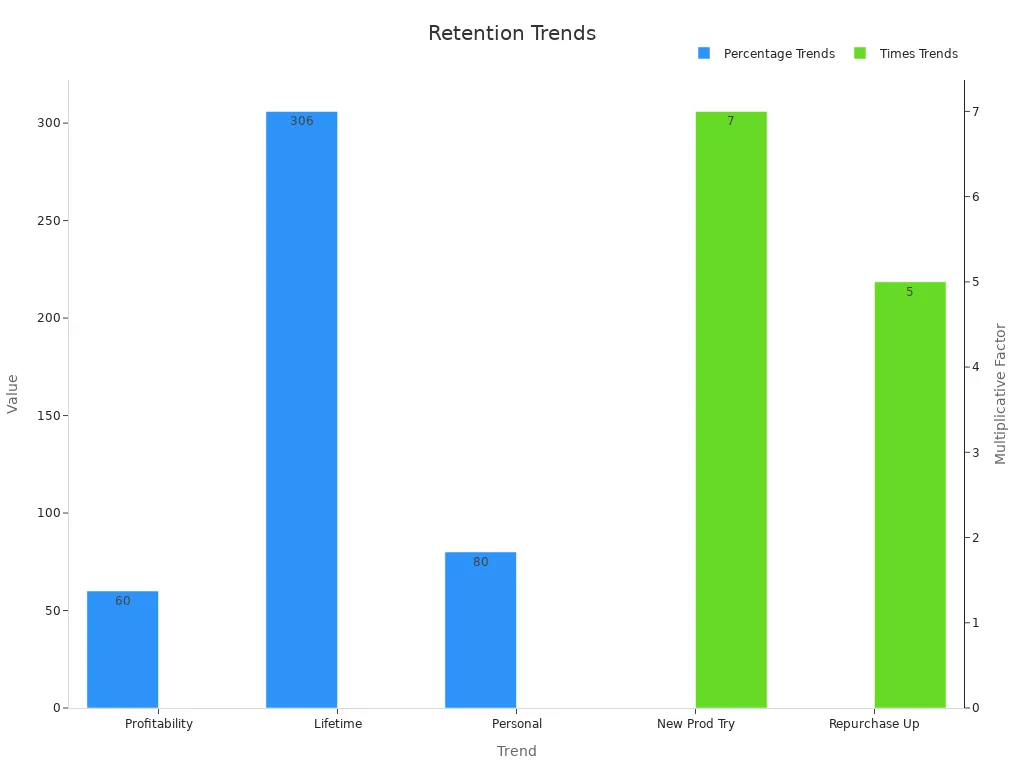
Strategies for Building Long-Term Relationships
To foster lasting relationships, focus on delivering consistent value and personalized experiences. Here are actionable strategies:
-
Personalized Communication
Customers appreciate tailored interactions. Use tools like Sobot's Voice/Call Center to analyze customer data and craft personalized outreach. For example, sending birthday greetings or exclusive offers can strengthen emotional connections. -
Proactive Engagement
Anticipate customer needs before they arise. Sobot's AI-powered Voicebot enables proactive communication, such as reminders for subscription renewals or updates on new product launches. This approach keeps customers engaged and reduces churn. -
Reward Loyalty
Implement loyalty programs to incentivize repeat purchases. Offer discounts, rewards, or exclusive access to services. Studies show that loyal customers spend 67% more than new ones, making these programs highly effective. -
Consistent Customer Support
Reliable support builds trust. Sobot's unified workspace ensures seamless communication across channels, enabling agents to resolve issues efficiently. This consistency enhances customer satisfaction and retention.
Benefits of Long-Term Relationships
Investing in long-term relationships yields measurable benefits:
- Higher Profitability: A 5% increase in customer retention can boost profits by 25% to 95%.
- Enhanced Predictability: Repeat customers create stable revenue streams, allowing better forecasting and resource allocation.
- Stronger Brand Advocacy: Loyal customers often recommend your brand, reducing acquisition costs.

By leveraging tools like Sobot's Voice/Call Center, you can implement these strategies effectively. Its features, such as intelligent IVR and real-time monitoring, empower you to deliver exceptional customer experiences, fostering loyalty and driving retention.
Real-World Example
Samsung’s collaboration with Sobot demonstrates the power of long-term relationships. By unifying communication channels and offering personalized service, Samsung achieved a 97% customer satisfaction rate and a 30% increase in agent efficiency. This success highlights the importance of investing in tools that enhance customer interactions and build loyalty.
Tip: Focus on creating emotional connections with your customers. Use data analytics to understand their preferences and deliver personalized experiences. Tools like Sobot’s Voice/Call Center simplify this process, helping you build lasting relationships that drive customer retention.
The Future of Customer Retention Rates
Emerging Trends in Retention Strategies
Retention strategies are evolving to meet the demands of modern customers. Emotional loyalty has emerged as a key trend, focusing on building strong emotional connections between customers and brands. This approach fosters deeper relationships and higher retention rates. Gamification is another innovative strategy, especially effective in retail and hospitality. By incorporating game-like elements such as rewards and challenges, businesses can boost engagement and encourage repeat interactions. Tiered benefits also play a significant role. Offering incentives based on customer spending and engagement motivates customers to remain loyal and climb higher tiers for exclusive perks.
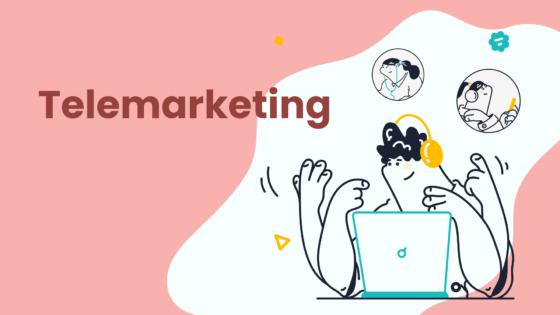
You can implement these strategies using tools like Sobot’s Voice/Call Center. Its AI-powered features enable personalized outreach and proactive communication, helping you strengthen emotional loyalty and enhance customer retention. For example, gamification campaigns can be supported by Sobot’s bulk outbound task feature, ensuring timely delivery of rewards and updates.
The Role of Technology and AI in Retention
Technology and AI are transforming how businesses approach customer retention. Predictive analytics, for instance, analyzes past behaviors to identify churn risks and enables proactive measures. Generative AI enhances personalization, streamlining processes and improving customer satisfaction. Real-time feedback analysis identifies sentiment trends, allowing businesses to address issues before they escalate. Netflix exemplifies the power of AI in retention. By analyzing viewer habits, Netflix has boosted retention rates by 79% through personalized recommendations.
Sobot’s Voice/Call Center integrates these advancements seamlessly. Its AI-powered Voicebot delivers intelligent interactions, while real-time monitoring provides actionable insights into customer sentiment. These features empower you to predict churn, personalize engagement, and improve retention rates across industries.
| Technology/Implementation | Impact on Customer Retention | Example/Source |
|---|---|---|
| Generative AI | Enhances personalization and streamlines processes, improving customer satisfaction. | ZeeProc |
| Predictive Analytics | Analyzes past behaviors to predict churn risk, enabling proactive measures. | AWS |
| Real-time Feedback Analysis | Identifies sentiment trends to address customer issues proactively. | ZeeProc |
| Example of Netflix | Uses AI to analyze viewer habits, boosting retention rates by 79% through personalization. | GetSuper |
Predictions for Retention Rates Across Key Sectors
Retention rates are expected to rise across industries as businesses adopt advanced tools and strategies. Trend analysis predicts improved customer engagement by identifying preferences and interests. Support Vector Machine (SVM) classifiers and Random Forest models are increasingly used to forecast retention, offering insights into client activity and loss. For example, Amazon has reduced turnover rates by up to 30% using predictive analytics.
In sectors like retail and gaming, gamification and tiered benefits will drive higher retention rates. Subscription-based industries will continue leveraging AI for personalized experiences, ensuring customer loyalty. Tools like Sobot’s Voice/Call Center will play a pivotal role in these advancements. Its ability to unify communication channels and provide real-time insights positions businesses to adapt to future trends and optimize customer retention strategies.
| Evidence Type | Description |
|---|---|
| Cost of Turnover | Replacing an employee can cost up to 33% of their annual salary, highlighting the financial impact of turnover. |
| Improvement in Retention | Organizations using predictive analytics are 2.3 times more likely to report significant increases in customer retention. |
| Reduction in Turnover | Companies like Amazon have reduced turnover rates by up to 30% through predictive modeling. |
Customer retention rates differ significantly across industries, reflecting unique challenges and opportunities. For example, retail averages 63%, while professional services and media lead at 84%. These variations highlight the need for tailored strategies to address sector-specific hurdles.
| Industry | Average Retention Rate |
|---|---|
| Retail | 63% |
| Banking | 75% |
| Telecom | 78% |
| IT Services | 81% |
| Insurance | 83% |
| Professional Services | 84% |
| Media | 84% |
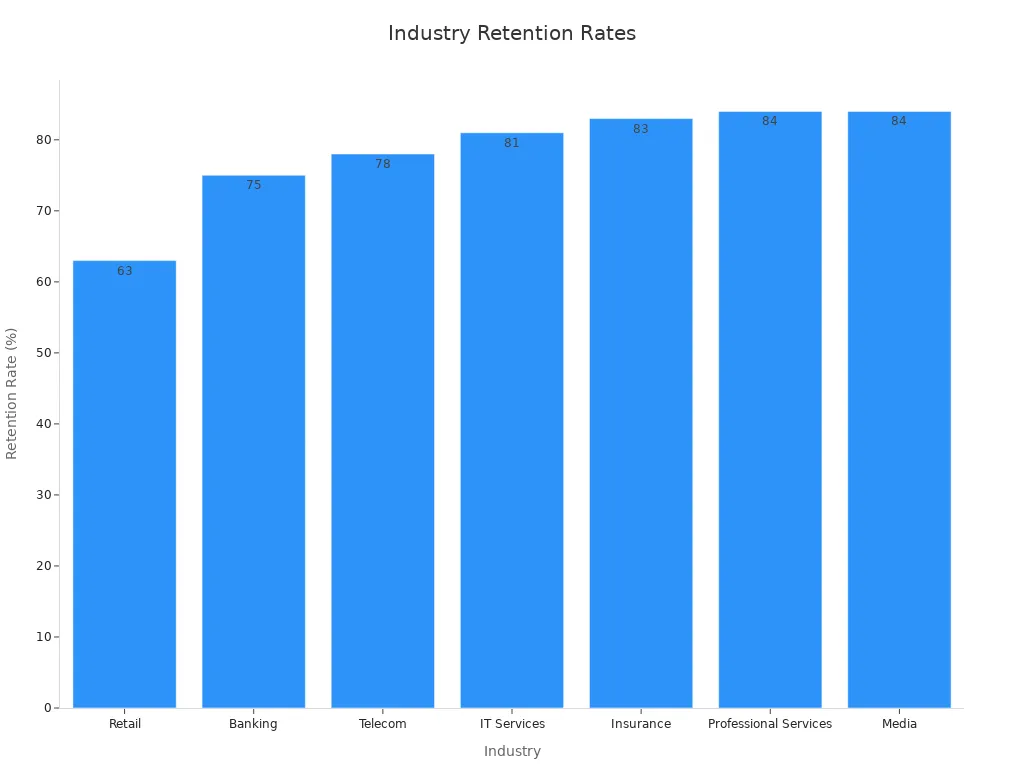
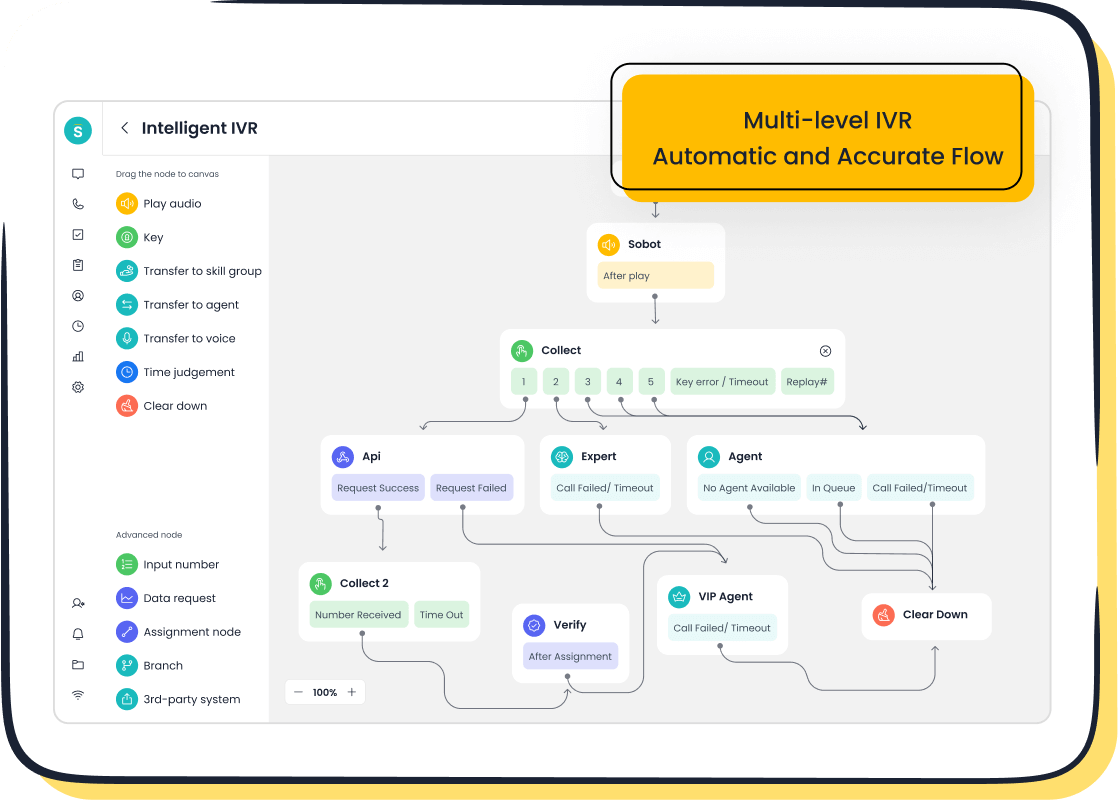
To improve customer retention, you must adopt tools that leverage data analytics and AI. Sobot's Voice/Call Center empowers businesses to analyze customer interactions, personalize outreach, and proactively reduce churn. By addressing industry-specific challenges with innovative solutions, you can foster loyalty and drive sustainable growth.
FAQ
What is the most effective way to improve customer retention?
The most effective way is to focus on personalized customer experiences. Tools like Sobot's Voice/Call Center analyze customer interactions and preferences, enabling you to tailor your services. Studies show personalized experiences can increase retention rates by up to 20%.
How does Sobot's Voice/Call Center help reduce churn?
Sobot's Voice/Call Center uses AI-powered features like intelligent IVR and real-time monitoring to identify churn risks. It enables proactive communication, such as reminders or personalized offers, which helps you engage customers and reduce churn effectively.
Why is customer retention more cost-effective than acquisition?
Retaining customers costs five times less than acquiring new ones. Existing customers are also 60-70% more likely to make repeat purchases. Sobot's tools help you focus on retention by improving customer satisfaction and loyalty.
Can small businesses benefit from Sobot's solutions?
Yes, Sobot's Voice/Call Center is scalable and suitable for businesses of all sizes. Small businesses can use features like bulk outbound tasks and call tracking to manage customer interactions efficiently and improve retention rates.
How do industry benchmarks help in setting retention goals?
Industry benchmarks provide a reference point for evaluating your retention performance. For example, SaaS companies aim for 90%, while retail targets 60-70%. Sobot's analytics tools help you track your metrics and align them with industry standards.
See Also
Best 10 Call Center Analytics Tools For 2024
Leading 10 Customer Feedback Software Options For 2024
Enhancing Call Center Efficiency Through Effective Monitoring
